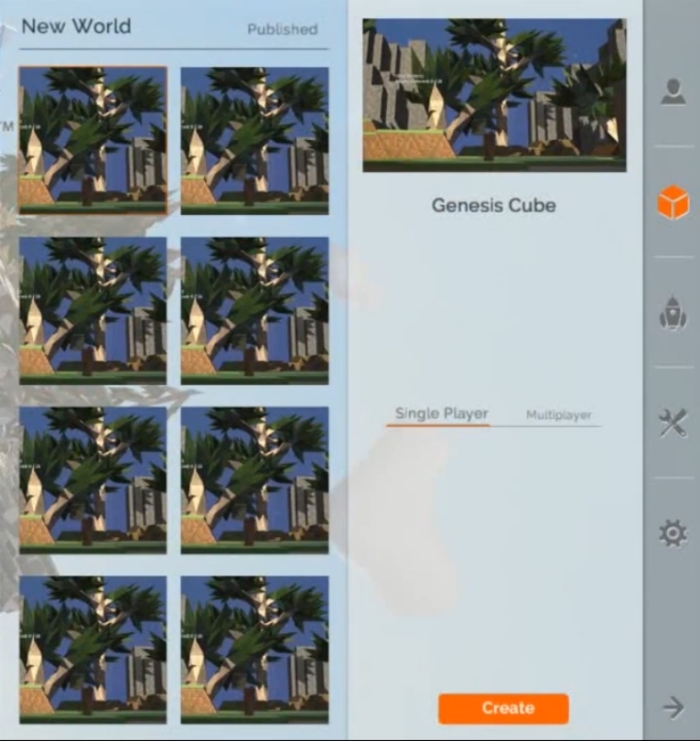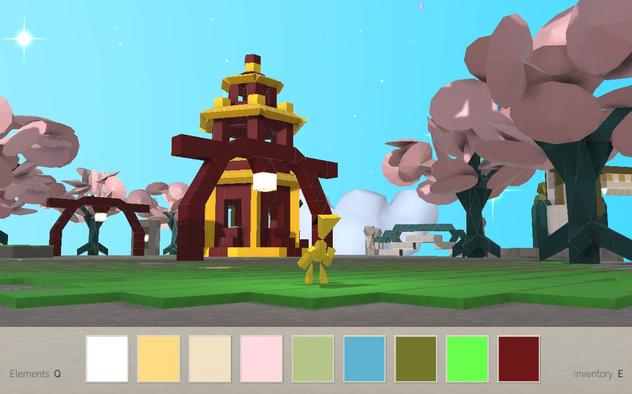 Update, October 9th, 2014: Linden Lab announced that development work on Patterns has been discontinued.
Update, October 9th, 2014: Linden Lab announced that development work on Patterns has been discontinued.
Patterns, Linden Lab’s slowly maturing sandbox game for the PC and Mac saw a new release on Friday May 9th. The update brings with a host of new features, including the promised new user interface, which I previewed in April.
Version 0.7 requires acceptance of the Lab’s Terms of Service, which tends to be the case with each major update of the game. Once this has been done, the changes to the game are evident right from the start, with the new right-hand sidebar now managing both logging-in to the game / creating an account and launching the game options, which now comprise five options:
- Create: allows you to create new worlds using the basic worlds provided with Patterns, or using your own existing worlds, either saved locally or previously published to the Patterns Cosmos
- Explore: allows you to explore the worlds in the Cosmos and access them. Worlds are defined in terms of featured, recently uploaded, and popular with users
- Find Multi-player allows you to quickly find any multi-player games which are in progress
- Tools: allows you to launch tools associated with Patterns. This is currently the Materials Editor, which I first looked at back at the start of January 2014 and then again in a little more detail and the end of that month
- Settings: access the game’s settings: controls, keys, graphics and audio.
The Create, Explore and Multi-player options preview available worlds in tabs, each world having its own thumbnail (if available) which, when clicked, displays more information on that world. This makes previewing worlds and selecting interesting ones for game play a lot more informative than earlier Patterns versions.

You can also opt to open any world in both the Create and Explore modes as either single player or multi-player. When starting a world in multi-player mode, you can either leave it set to “open”, allowing it to be displayed in the Multi-player tab such that anyone can select it and join the game (up to the maximum number of four players), or you can set a password against it, which other players have to use in order to access the game (handy for when you want to keep a game among friends).
The streamlined UI makes selecting shapes, materials and models a lot easier, and also offers a cleaner overall UI. At the bottom of the Patterns window is a tool bar area which has a toggle option on the left which switches it between elements and materials, and each of which have ten placeholders apiece, which can be used to store your preferred elements and materials ready for immediate use. an Inventory icon on the right of the toolbar will open your full inventory of shapes, materials and models, allowing you to quickly drag and drop them into the placeholders, replacing anything previously stored in any given placeholder, making selecting and swapping shapes to suit your needs fast and easy. ESC closes the inventory window and returns you to the game play.
When used in-game, ESC will pause the game and call-up additional options, but in a slightly different format to previous releases, with everything other than the option to save the world to your hard drive now also located in the right-hand sidebar. These options include the familiar game settings, the respawn world option, help, and a new scene settings option.
The scene settings option provides access to a number of tabs which allow you to adjust a number of options associated with a world – how gravity works, what appears in the sky, fog effects, lighting (direct, reflections, etc.), SSAO blurring, and so on.You can also use this option to add your own materials packs to a world as well. A video from SandovalCurse (aka happyhappygaming on YouTube) of the Curse team provides and overview of the scene setting options.
Continue reading “Patterns: all change for a new experience”











